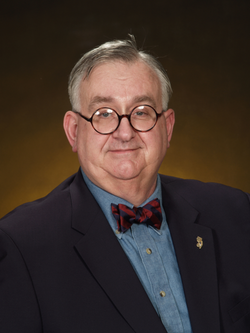Let me start this visit with you by asking you a simple question. Are we all on the same team? Week after week I read page after page of safety-related messages. I have come to feel that my friends here at Respondersafety.com and I are part of a large team of people dedicated to reducing the rate of deaths and injuries in the fire, police, and EMS worlds. The past 18 months have been particularly exciting. Thanks to the hard-work of Ron Siarnicki and the National Fallen Firefighter's Foundation, we now have a central focus on ways in which we can reduce the death rates that are creeping back up to the rates last seen many years ago. Ron is on target and on message with his approach.
The recent Firefighter Safety Stand Down was a good first cut at the fast balls being pitched at us by the world within which we work. The Cumberland Valley Volunteer Fireman's Association was a strong supporter of this effort. Although the data are still coming in, it appears that large numbers of people took part in this effort.
We here at Respondersafety.com have remained consistently on target through the years. Going back to our initial efforts at Halfway, Maryland back in 1999, we have remained true to the issue of reducing the number of "struck-by deaths and injuries" which are attacking our people across the country. You only have to review our struck by data to understand the magnitude of this problem.
Here you have large numbers of people working together on all of the various safety-related issues, and substrates of issues facing our operational forces. What a great thing. And then suddenly you have someone coming up and kick sand on our beach blanket.
I was personally saddened by the vicious tone of an editorial which appeared on the Fire Apparatus Magazine website. The writer speaks vehemently against the lighting study which has been funded by the U.S. Department of Transportation and the U.S. Fire Administration. Since I happen to be a member of that study group, I feel particularly offended by the writer's comments.
There was originally some thinking about not even responding. Let that person have their opinion, heck, I have written mine down for all to see on more than one occasion. But then it got personal when he started attacking the efforts that are underway to save the lives of people, like you and I, who are out there on the highways and byways of North America.
In just a few short sentences, he dismisses the efforts of all of the things that we have stood for. He suggests that since most deaths are from heart attacks, we should concentrate our efforts there. While you cannot disagree with that thought, neither can you limit yourself to that thought. The same people that are working diligently to attack the heart-related issues of the fire and emergency service world are also working with Respondersafety.com to reduced highway struck-by deaths and injuries.
The editorialist goes on to say that we are wasting money by working on an area of safety where we are only losing 3.6 people per year. He says that more people die from drowning. Why not divert money from highway safety to drowning safety? This gentleman goes on to state dismiss a number of death factors as insignificant.
Which one of those who lost their lives in what this man seems to suggest are insignificant ways would we not welcome back joyfully to the circle of our friendship? Would the family of Joseph Krowboth, Jr. whose tragic death at a highway incident caused us to establish our project, not want him among them again?
Many of us have been on message for a long time now. The International Association of Fire Chiefs, the National Volunteer Fire Council, the International Association of Firefighters, and the U.S. Fire Administration, among others, have been ardent supporters of the cause of safety in our operational world.
If you have not read our White Paper, which is available on this site, please do so. We identified in 1999 that lighting colors on parked emergency vehicles are problematic to oncoming motorists and should be studied so managers can make a safe decision when making emergency lighting purchases. Coincidently, we also wrote about the problem of cardiovascular stress for traffic controls and suggested ways to deal with that important issue.
Having been in on this effort from its genesis, I take great umbrage at anyone who suggests that we are wasting time on any one aspect of safety. As I recall the mandate from the U.S. Fire Administration and the National Fallen Firefighter's Foundation, we are working to reduce the death rate by 25 percent in five years and 50 percent in ten years.
Tell me which part of the whole is any less important than the rest. Then tell the grieving spouse, children, and parents of that person that we did not want to work on preventing deaths such as they suffered. I would suggest that the person who wrote this article stop living in the past.
The writer tried to paint us as a bunch of yahoos working to bring back funny-colored fire vehicles. My friends, if that is all he is concerned about, I would suggest he broaden his focus. That is my opinion, and I could be wrong.
Let me close by stating that this individual's editorial can be found at http://www.fireapparatusmagazine.com/column_1.html. I would urge you to stop by and take a look at one man's view of the world. Then come back and help us to save a life.


